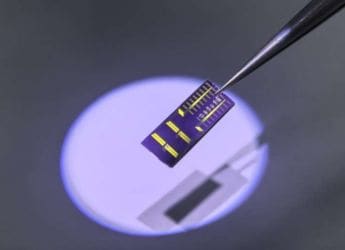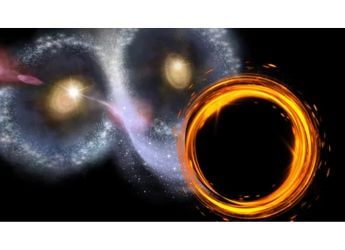- Home
- Science
- Science News
- Early Solar System Was More Chaotic as Rocks, Boulders, and Planetesimals Constantly Collided, Says New Study
Early Solar System Was More Chaotic as Rocks, Boulders, and Planetesimals Constantly Collided, Says New Study
New research, which was based on fragments of asteroids that collided with Earth, provides a timeline for part of the mayhem

Photo Credit: UKT2/Pixabay
Iron meteorites are of great interest to scientists because of the information they contain
A new study based on asteroids that collided with Earth has given some of the turmoil a chronological frame. Astronomers believe asteroids have remained virtually unchanged since their genesis billions of years ago in the early solar system. However, not all asteroids stayed intact. Repeated collisions gradually robbed the insulating mantles of their iron cores, shattering some of the cores into fragments. Some of those fragments landed on Earth. People were fascinated by meteorites that fell from space, and in certain circumstances, they were a useful resource — King Tut was buried with a dagger made from an iron meteorite, while Inuit people in Greenland manufactured tools out of an iron meteorite.
Iron meteorites are of great interest to scientists because of the information they contain. Palladium, silver, and platinum isotopes were studied in a new study based on iron meteorites, which are debris from the core of bigger asteroids. The authors were able to tighten the time of some early solar system events by measuring the levels of those isotopes.
The paper was published in Nature Astronomy.
Lead author Alison Hunt from ETH Zurich and the National Center of Competence in Research (NCCR) PlanetS, was quoted as saying in a report published in the Universe Today that previous scientific research have found that asteroids in the solar system have stayed remarkably unaltered over billions of years after their formation. As a result, they serve as a repository for the conditions of the early solar system.
We know more about elements, isotopes, and decay chains than the ancient Egyptians and Inuit. We know how distinct elements decay into other elements in chains, and how long it takes.
One of these decay chains, the short-lived 107Pd–107Ag decay system, is at the heart of this research. The half-life of this chain is around 6.5 million years, and it is used to detect the presence of short-lived nuclides from the early solar system.
The scientists collected samples from 18 different iron meteorites that were formerly part of asteroids' iron cores. The palladium, silver, and platinum in them were then separated, and the concentrations of distinct isotopes of the three elements were measured using a mass spectrometer. In this study, a certain silver isotope is crucial.
Decaying radioactive isotopes heated the metallic cores of asteroids during the first few million years of the solar system's lifetime. An isotope of silver (107Ag) accumulated in the cores as they cooled and more isotopes decayed. The researchers estimated how quickly and when the asteroid cores cooled by measuring the ratio of 107Ag to other isotopes.
Hunt said that they were able to adjust the silver isotope readings for distortions produced by cosmic irradiation of the materials in space, thanks to their supplementary platinum isotope abundance observations. As a result, they were able to date the impacts with greater precision than ever before. And, to their surprise, all the asteroidal cores they studied were exposed practically simultaneously, between 7.8 and 11.7 million years after the solar system was formed.
In astronomy, a 4-million-year time span is considered short. All of the asteroids surveyed had their cores exposed over that brief period, implying that collisions with other objects took away their mantles. The cores all cooled at the same time without the insulating mantles.
The solar system had to be a very chaotic environment for the asteroids to have the isotope ratios the researchers discovered, with a period of frequent collisions that removed the mantles from asteroids.
Maria Schonbachler, the study's co-author, said that their research shows how advances in laboratory measurement techniques can enable them to infer essential processes in the early solar system. At the time, planets like the Earth were still in the process of forming. Finally, this will not only help them better understand how Earth was formed, but also provide information on worlds beyond the solar system.
Get your daily dose of tech news, reviews, and insights, in under 80 characters on Gadgets 360 Turbo. Connect with fellow tech lovers on our Forum. Follow us on X, Facebook, WhatsApp, Threads and Google News for instant updates. Catch all the action on our YouTube channel.
Related Stories
- Samsung Galaxy Unpacked 2025
- ChatGPT
- Redmi Note 14 Pro+
- iPhone 16
- Apple Vision Pro
- Oneplus 12
- OnePlus Nord CE 3 Lite 5G
- iPhone 13
- Xiaomi 14 Pro
- Oppo Find N3
- Tecno Spark Go (2023)
- Realme V30
- Best Phones Under 25000
- Samsung Galaxy S24 Series
- Cryptocurrency
- iQoo 12
- Samsung Galaxy S24 Ultra
- Giottus
- Samsung Galaxy Z Flip 5
- Apple 'Scary Fast'
- Housefull 5
- GoPro Hero 12 Black Review
- Invincible Season 2
- JioGlass
- HD Ready TV
- Laptop Under 50000
- Smartwatch Under 10000
- Latest Mobile Phones
- Compare Phones
- OnePlus 15R
- Realme Narzo 90x 5G
- Realme Narzo 90 5G
- Vivo S50 Pro Mini
- Vivo S50
- OPPO Reno 15c
- Redmi Note 15 5G
- Redmi Note 15 Pro 5G
- Asus ProArt P16
- MacBook Pro 14-inch (M5, 2025)
- Infinix Xpad Edge
- OnePlus Pad Go 2
- OnePlus Watch Lite
- Just Corseca Skywatch Pro
- Acerpure Nitro Z Series 100-inch QLED TV
- Samsung 43 Inch LED Ultra HD (4K) Smart TV (UA43UE81AFULXL)
- Asus ROG Ally
- Nintendo Switch Lite
- Haier 1.6 Ton 5 Star Inverter Split AC (HSU19G-MZAID5BN-INV)
- Haier 1.6 Ton 5 Star Inverter Split AC (HSU19G-MZAIM5BN-INV)

















